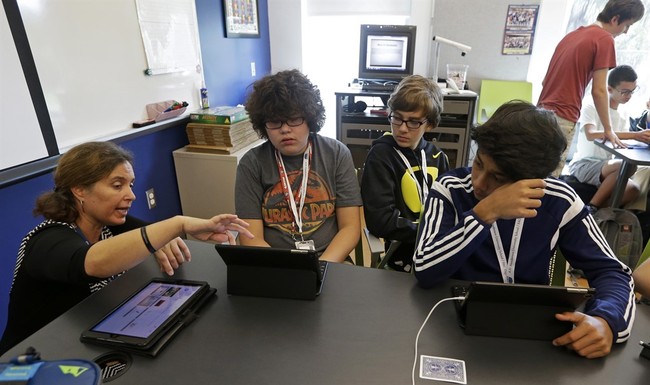
America’s adolescents are suffering from a mental health crisis, and the evidence suggests an extraordinary but significant contributing factor. Data from the Centers for Disease Control and Prevention (CDC) paints a troubling picture: in 2021–2022, among U.S. adolescents ages 12–17, 21% reported symptoms of anxiety and 17% reported symptoms of depression within the previous two weeks. Among high school students in 2023, 40% experienced persistent feelings of sadness or hopelessness over the previous year, 20% seriously considered attempting suicide, 16% made a suicide plan, and 9% attempted suicide. These statistics follow strongly after adolescent depression already increased from 8.1% in 2009 to 15.8% in 2019, a relatively larger increase than reported in a previous examination in the National Survey on Drug Use and Health from 2005 to 2014.
What is triggering this precipitous decline in our children’s mental well-being? Dr. Peter Gray writes in Psychology Today that teen suicides jumped more than 400% from 1950 to 1990, largely due to what he has dubbed “the imprisonment theory,” or constraints on independence by institutionalized schooling and correspondingly altered home life.
The modern school framework often prioritizes standardization and compliance over individuality and critical thinking, fostering an atmosphere of relentless pressure, conditioning students to equate their worth with academic performance and social conformity. The result is a pervasive sense of inadequacy among adolescents, who feel they lack the tools to navigate an unspoken set of expectations. Rizza Burmio-Gonzalez, author of “Treating Anxiety,” says we are conditioned to “believe that there is a right and a wrong answer and that we will always choose wrong no matter what we choose because it is us.” A system that emphasizes correct answers over creative problem-solving erodes self-confidence and fuels anxiety.
According to Adolescent Psychiatry, “a whopping 83% of teens report school as a source of stress, with 69% straining about what to do after high school or getting into a good college,” a pressure instigated by their schooling (and often exacerbated by parents and society.)
Schools, where students spend the majority of their productive waking hours, often further amplify these pressures through rigid curriculums, high-stakes testing, and a culture that penalizes deviation from the norm. Rather than encouraging resilience and self-assurance, this environment can instill a fear of failure and a dependence on external validation: the opposite of independence.
Perhaps in response to the decline in teen mental health, schools implemented social and emotional learning (SEL) which, according to the Collaborative for Academic, Social and Emotional Learning, “advances educational equity and excellence through . . . rigorous and meaningful curriculum and instruction, and ongoing evaluation.” Equity turns students against each other and themselves, replacing honest competition with superficial judgements, increasing isolation and dependence. The SEL framework also encourages students towards ignorant introspection on a fool’s errand for self-worth, instead of outward service, which can help teens earn actual self-worth. Over time, these dynamics contribute to the alarming rates of anxiety, depression, and suicidal ideation reflected in the CDC’s data.
Addressing this crisis requires a fundamental reevaluation of our school system’s dynamics. The challenge is to have the institution that created the problem be the one to resolve it. Schools must shift toward environments that nurture individuality, critical thinking, and service to others, a challenging move for a stubborn institution dedicated to teaching, above all, conformity and obedience. Separation of children from their parents, replacing the parental authority with the school authority, was instrumental to achieving high rates of compliance.
But reinstating the family is indispensable for the welfare of children.
A positive first step would be to involve parents more, not less. Children learn their initial value as members of the family unit. Dr. Leonard Sax writes in The Collapse of Parenting: How We Hurt Our Kids When We Treat Them Like Grown-Ups,
. . . just when kids need parents more than ever to teach them the whole package of what it means to be a good person in this particular culture, the authority of parents to do that job has been undermined. We now live in a culture in which kids value the opinion of same-age peers more than they value the opinion of their parents, a culture in which the authority of parents has declined . . .
Part of that decline was precipitated by the National School Boards Association, Attorney General Merrick Garland, and the FBI coordinating to use local law enforcementto target parents speaking out at school board meetings for persecution as domestic terrorists, in the autumn of 2021. Parents Demanding Justice Alliance convened to bring attention to this egregious, destructive development. That arrogant attitude and disgraceful policy needed to be reversed by the current administration, and school boards must change their tunes to repair some of the damage they have done.
The CDC’s statistics—21% anxiety, 40% sadness, 9% suicide attempts—are a call to action. The current school system, with its unspoken rules and rigid expectations, is failing to equip adolescents with the tools to thrive. The need for reform is urgent. At the very least, we must demand that schools revise policies and procedures to include parents on the granular level, as a way of reestablishing the family in the general dialog on children and their education. Parental involvement is the number one predictor of academic achievement. School boards should be composed of parents; parents must insinuate themselves (again) in their children’s upbringing.
We must return to valuing family, for the sake of our children’s mental health and futures.












